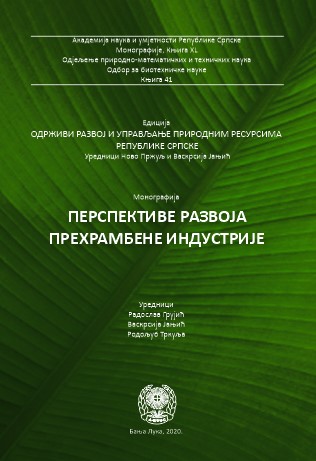Mycotoxins in food and the risk to consumer health
DOI:
https://doi.org/10.7251/EORU2002475KKeywords:
Mycotoxins, Risk to consumer health, Republic of Serbia, Republic of SrpskaAbstract
Mycotoxins are secondary metabolites of filamentous fungi mainly produced by Fusarium, Alternaria, Aspergillus and Penicillium species. Presence of mycotoxins in food and feed may have numerous health consequences, for both human and animals. Furthermore, occurrence of fungi and mycotoxins in food and feed can cause great economic losses. Therefore, in the recent decades mycotoxins are recognized as significant worldwide concern. Although several hundred different mycotoxins are known, obligatory control as well as maximum levels are defined only for the following mycotoxins: aflatoxins, ochratoxin A, deoxynivalenol, zearalenone, fumonisins and patulin. However, in the recent years, scientific attention is increasingly focused on many new mycotoxins and their involvement in different adverse effects on human and animals health. Furthermore, climate changes are recognized as important factors that seriously affect recent increases in fungi and mycotoxins occurrence worldwide. Based on everything stated above it could be noticed that mycotoxins, as one of the most toxic and the most frequent chemical contaminants of food chain, represent serious concerns and a growing global problem. However, due to non-implementation of continuous control and permanent monitoring of mycotoxins, there is still lack of data related to the occurrence of mycotoxins in the Republic of Srpska. There is a need for Republic of Srpska to enhance the control strategy of mycotoxins which would begreatly contribute to the increase of available data and further improvement of food and feed quality and safety, as well as decrease of economic losses. The aim of this chapter is to present an overview of the most significant and most recent researches related to the occurrence of mycotoxins in food.
